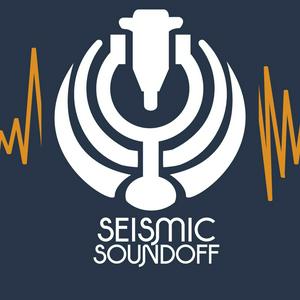261: Innovations in Land Seismic Acquisition with Andrea Crook
"We're seeing rapid advances both in seismic acquisition technologies and in processing techniques. In order to get data that is appropriate for full waveform inversion, you have to rethink how you're acquiring the data in the field."
In this episode, host Andrew Geary speaks with Andrea Crook, CEO of OptiSeis and lead instructor of the IMAGE 2025 short course, Innovations in Land Seismic Acquisition. Andrea explores the seismic design landscape, breaking down how advances in sources, sensors, sampling, and sustainability are reshaping land acquisition. Listeners will walk away with practical strategies to enhance survey quality, minimize environmental impact, and more effectively connect acquisition with processing and interpretation.
KEY TAKEAWAYS
> Innovations in survey design, such as high-density Vibroseis and nodal systems, lead to improved data and safer operations.
> Sustainability in seismic acquisition isn’t just good for the planet - it also drives cost efficiency and long-term data value.
> Course attendees will learn how to evaluate survey trade-offs, enhance trace density, and make informed decisions using real-world examples.
CALL TO ACTION
Ready to improve your surveys and future-proof your data? Sign up for Innovations in Land Seismic Acquisition at IMAGE 2025. This hands-on short course, led by Andrea Crook, covers the latest technologies, field-tested strategies, and real-world examples to boost your survey success. Separate registration is required; please reserve your spot at https://www.imageevent.org/short-courses/short-course-25/innovations-in-land-seismic-acquisition-seg.
GUEST BIO
Andrea Crook, P.Geoph., is the CEO of OptiSeis, a company she co-founded in 2011 to provide innovative solutions for accurate subsurface imaging. Andrea graduated from the University of Manitoba with a B.Sc. Honours in Geophysics and began her career at Shell Canada in seismic processing and geophysical operations. Based on her extensive contributions to the field of geophysics, she received the 2019 CSEG Technical Achievement Award and was the Society’s 2023 Symposium Honouree. She is also on the Board of Directors for the Clean Resource Innovation Network (CRIN), was selected to present the 2024/25 CSEG Canadian Distinguished Lecture Tour, and is the recipient of both the 2019 and 2024 GeoConvention Best Paper Award. Through active collaboration with industry and academia, she and her team continue to develop innovative solutions for environmentally sustainable subsurface imaging.
LINKS
* Sign up for Innovations in Land Seismic Acquisition at IMAGE 2025 at https://www.imageevent.org/short-courses/short-course-25/innovations-in-land-seismic-acquisition-seg
* Visit https://seg.org/podcasts/episode-261-innovations-in-land-seismic-acquisition-with-andrea-crook for all the resources mentioned in this episode.
